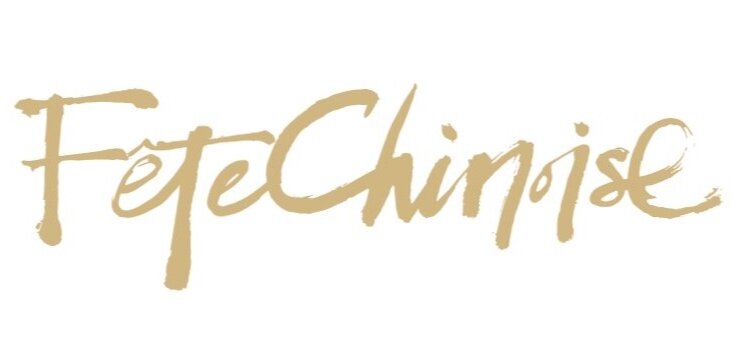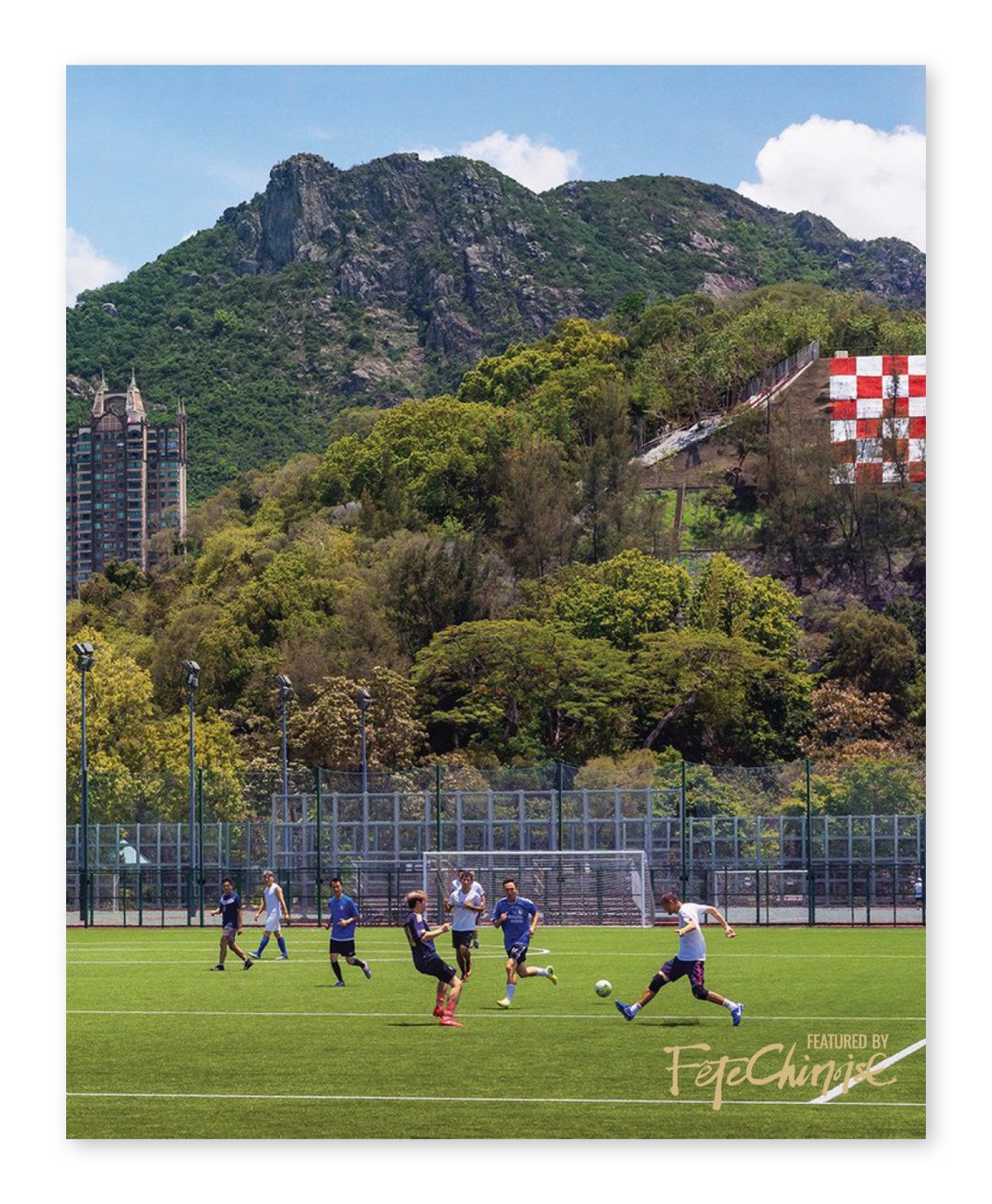Romain Jacquet-Lagrèze: Thirty-Six Views of Lion Rock 獅子山三十六景, a Collector’s Gem
Interview: Deborah Lau-Yu · Photography: Romain Jacquet-Lagrèze
curated by: Bo Sun & the fête chinoise editorial team
Romain Jacquet-Lagrèze’s latest book, Thirty-six Views of Lion Rock, 2022
Cover featuring, Peculiar Proximity, 2021
Print is for from being obsolete. Beautiful photo books have become collectors items and coveted print pieces that capture the spirit of collective memory. Celebrated photographer, Romain Jacquet-Lagrèze, launched a brand new book and solo exhibition, Thirty-six Views of Lion Rock 獅子山三十六景. It was unveiled at Blue Lotus Gallery in Hong Kong from September 8th to October 9th, 2022. Romain Jacquet-Lagrèze is a talented thought-leader whom we have had the pleasure of working with for several years since Edition No. 4 of Fête Chinoise Magazine, The Language of Legacy. Our article on his previous project, City Poetry, can be viewed at the link below.
English and Chinese texts, Hardcover, 64 pages, Published in 2022 by Blue Lotus Editions
English and Chinese texts, Hardcover, 64 pages,
Published in 2022 by Blue Lotus Editions
Be sure to check out his books including Thirty-Six Views of Lion Rock, on his website, and participate our upcoming giveaway for his book on our Instagram page soon.
Romain Jacquet-Lagréze, Crouching Lion Watching over the City
In his latest book, The Lion Rock, Hong Kong’s age-old symbol found in art, film, music and literature, is featured in each of the photos, some in a far distance obscured by high rise buildings, traffic or bustling markets. In other images, it is more prominent, far removed from the urban jungle, channeling peace and tranquility. Some photos are shot at sunrise, others during the blue moment at dusk. In a bustling metropolis, Thirty-six Views of Lion Rock, is a devoted love letter to the mountain that Hong Kongers know and love.
“Hong Kong has been, for me, the most inspirational place to take photos. I think that if I never lived in Hong Kong, I wouldn’t have become a photographer.”
Romain Jacquet-Lagrèze, Hidden side face
why the lion rock
Fête Chinoise: How did you come up with the idea of having the Lion Rock as your latest photographic theme, which led to this beautiful new book, The Thirty Views of Lion Rock?
“in Japan, I admired many artworks from contemporary art to classical. Among the classics, Hokusai was the most touching one for me, especially his 'Thirty-six Views of Mount Fuji'.”
Fine Wind, Clear Morning by Hokusai
Romain: When I moved to Hong Kong in 2009, I settled in Kowloon and never moved, so the Lion Rock was always close in sight. I remember that it was the very first mountain that I hiked. It left a vibrant memory in me. Before moving to Hong Kong, I had the chance to live for 6 months in Japan where I admired many artworks from contemporary art to classical. Among the classics, Hokusai was the most touching one for me, especially his 'Thirty-six Views of Mount Fuji'. So the idea of using Hokusai's "method" to show the Lion Rock came quite naturally to me.
The Lion Rock represents many things for Hong Kong people, and each generation has its own view about it. It has been the symbol of economic rise and the "can-do" attitude of the older generation, while for the younger generation it is a symbol of the local identity of Hong Kong. And I am sure future generations will find another meaning to this mountain.
“The Lion Rock represents many things for Hong Kong people, and each generation has its own view about it. It has been the symbol of economic rise and the “can-do” attitude of the older generation.”
Romain Jacquet-Lagrèze, players on the soccer field
Fête Chinoise: How has the response been from your fans and other photography lovers in the city? How about globally, with many Hong Kongers living abroad?
Romain: It has been overwhelmingly positive, especially from Hong Kong people who are very touched to see my photos. A lot has happened in the past few years and society has been quite divided since then. I think it is soothing for everyone to focus on the common ground that is bonding us together. The Lion Rock is one of these things we all share when living in Hong Kong. Overseas, the reaction has also been positive, especially from Hong Kongers who have settled abroad. They all miss Hong Kong and seeing my photos gives them a nostalgic feeling.
Romain Jacquet-Lagrèze, Youth Vibrancy, 2020
Fête Chinoise: Is there a certain image of Hong Kong you are particularly most proud of in this book? Or a favourite one? What was involved in getting the final result?
Romain: I think one of my favourite photos is 'Youth Vibrancy' as it portrays the vivacity and the energy of Hong Kong people. The photo was taken during the toughest months of Covid restrictions, when even outdoor playgrounds were supposedly forbidden to use. But these 2 young men decided to play basketball whatsoever and they had the whole playground just for themselves.
Romain Jacquet-Lagrèze, Youth Vibrancy, 2020
This photo has been shot in a very popular estate that has become viral on Instagram for years. Everyone would come here to take selfies, so I think that many people can relate to this place. I am proud that I managed to find a different point of view where you not only see the special colours of the buildings and the playground, but you can also see the Lion Rock above it.
Romain Jacquet-Lagrèze, lion behind the wall
Fête Chinoise: For your book readers, from what perspective do you want them to view your photos?
Romain: From the perspective of someone living in Hong Kong, having your daily life here in the city and from time to time you look around you to contemplate the city and you can see the Lion Rock overlooking the whole city.
Romain Jacquet-Lagrèze, Hikers in the Highlands, 2021
Fête Chinoise: Your body of work is artistic and makes for beautiful art in any home. Do you plan on printing larger archival prints that admirers can collect of your work? Photographers of the past had more limitations in terms of scale and dimensions, but today's printing technology offers a lot more. What's ideally the biggest scale you'd like to print your collections?
Romain: We did an exhibition of my work at Blue Lotus Gallery in September and October where we printed my photos on a larger scale than in the book. Some photos are more intimate like 'Narrow opening' and 'Flower Market' and are thus looking better in smaller size prints like 60cm on the long side. While others are meant to be more impressive and look best when printed at 120cm on the long side like 'Peculiar Proximity' and 'Above the Clouds'.
Romain Jacquet-Lagrèze, Above the Clouds, 2021
Hong kong as a subject
Fête Chinoise: Is there one specific destination in Hong Kong you could suggest photographers visit?
Romain: I think all photographers should visit Mong Kok and Sham Shui Po as these places are just so vibrant and full of life and contrast. For me as a photographer, it has been at the core of my inspiration for several years.
Romain Jacquet-Lagrèze, fruit market at night
Fête Chinoise: You have been capturing so many profound moments of Hong Kong for several years now. Is there any specific change or difference happening you have recognized in the past two years of the pandemic that impacted the landscape of the city?
Romain: The most noticeable change is the big rise in stores and cafes and restaurants targeting local people. Trying to make them travel to different atmospheres while staying in Hong Kong due to the restrictions.
Romain Jacquet-Lagrèze, Flower Market, 2020
Fête Chinoise: How do you find and decide on the right building or skyline view to photograph? How much researching and planning goes into a location before you go there? Or is it spontaneous?
Romain: It is quite spontaneous. The whole process is taking a lot of walking in the streets of the city looking for scenic places and then coming back to take photos of it when the light conditions are at their best, typically sunset, sunrise, or dusk.
Fête Chinoise: Who and what inspires you to keep creating and exploring the city of Hong Kong?
Romain: I don't know. I feel like Hong Kong is magnetic to me. I hardly can go out walking without having an idea of a new photo to take.
Romain Jacquet-Lagrèze, Peculiar Proximity, 2021
As a photographer
Fête Chinoise: What are the essential characteristics of a successful photographer in 2022?
Romain: Nowadays you must be very active on social networks. Otherwise, no one can see you. But being too active on these platforms tends to make your photos more standardized because you want to fit in what the algorithm likes to show to generate likes and follows. So you must be careful in not digging too much in that direction. Otherwise you will become just another photographer on Instagram with pretty pictures but without soul into it.
Fête Chinoise: What details do you enjoy focusing on in your work?
Romain: The visual marks of the passing of time is something that has been fascinating to me, and you can usually find this aspect in most of my photos.
Romain Jacquet-Lagrèze, Doves In The Phoenix Tree, 2020
Fête Chinoise: You have photographed in several countries, and do you think that living in Hong Kong influenced your style of photography?
Romain: Totally, Hong Kong has been, for me, the most inspirational place to take photos. I think that if I never lived in Hong Kong, I wouldn't have become a photographer.
Fête Chinoise: What challenges do you most have these days with shooting? From the world of photography, what keeps you motivated or inspired?
Romain: I try to be positive and not focus too much on things that I dislike in photography. My luck is to be living in Hong Kong, walking its streets everyday, and constantly being inspired by it as it keeps changing and evolving rapidly.
Sponsored by FERRIS WHEEL PRESS
Romain Jacquet-Lagrèze, passing by the temple
Fête Chinoise: There are a sea of images uploaded to the internet everyday. Can you take us through your creative journey and tell us what it is that you look for in creating an image?
Romain: I look for beauty, not for prettiness. Most of the photos you will look at on Instagram or other social platforms are just meant to be pretty enough to trigger in you the "like" reaction. For me, photography is about showing people things that they would not look at in their daily lives, because it is hidden, or because it is disregarded as a small detail that isn't worth focusing on. I focus on all these details and I believe that is the best way for me to bring soul and beauty to my photos.
Romain Jacquet-Lagrèze, Shek Kip Mei Street
Fête Chinoise: How long do you usually spend in one location? Do you have in mind the type of shots that you want to get before heading to the location and do you have a good idea of what gear you will need to use?
Romain: Only a few "lucky" shots were taken during my first time visiting a specific spot. Most of the time, I would me scouting for spots with very light photo gear and once I find a place with potential I would come back with the right gear and when the light conditions are better.
Romain Jacquet-Lagrèze, Narrow Opening, 2020
Fête Chinoise: What is your next book or project? Give us some hints without giving too much away!
Romain: Honestly, I can never answer this question because I always have a few ideas at the same time and I am not sure which one I will complete first. Recently I am quite into revisiting my previous series 'Wild Concrete' (link) because it was shot almost 10 years ago and most of the trees in it are gone and many new beautiful trees have been growing since then...
Romain Jacquet-Lagrèze, Bather in Lei Yue Mun, 2020
Fête Chinoise: Where can people go to follow your journey on social media and what's the best way to contact you for your book(s)?
Romain: People can see all my works on my Instagram page @romainjacquetlagreze and Facebook page @rjlart. All of my books are available on my online store at the link below.
SPonsored by FERRIS WHEEL PRESS





























Toronto-based home cook Veronica Wu takes the crown in MasterChef Canada Season 8, impressing judges Mary Berg, Hugh Acheson, and Craig Wong with her bold, Chinese-inspired dishes. In this exclusive Q&A, Veronica reflects on her journey through MasterChef Canada Season 8 and the challenges of the finale.